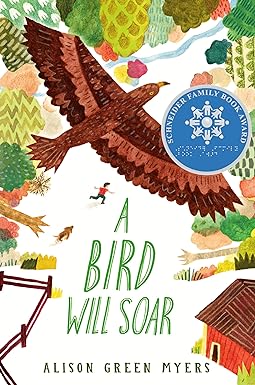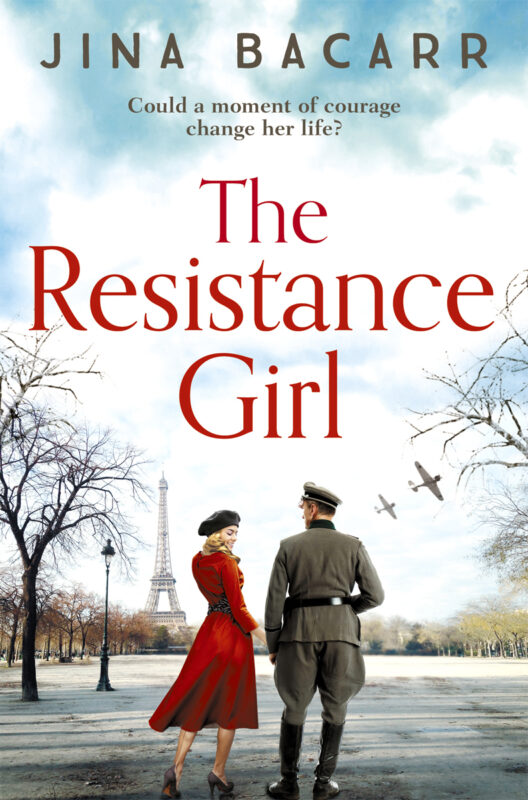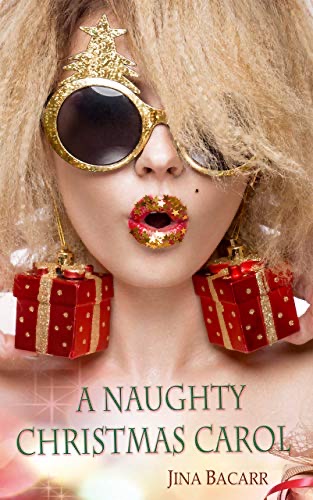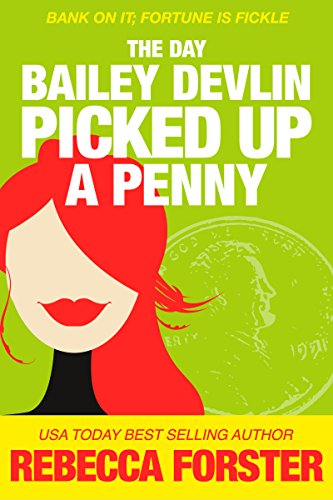How to Start an Online Course in Two Steps by Kitty Bucholtz
June 9, 2016 by Kitty Bucholtz in category It's Worth It by Kitty Bucholtz tagged as It's Worth It, Kitty Bucholtz, Online Class, Online ClassesYou probably know that I’ve been teaching online classes for about eight years now, maybe longer. I absolutely love to teach! The “usual” tech for doing this for the last decade or more has been to have your students sign up for a Yahoo Group that you create, and then you send them emails with the lectures, the students email you questions, and you email the group back with your answers.
That was a great way to do it for a while. But I wanted to add more to the classes – audio and video and live Q&A interaction. Enter the new online class platforms.
There are a lot of websites, platforms, plugins, and course-building sites out there now. A lot. I’ve tried a few, but I’ve recently moved everything to CourseLauncherHQ. I want to tell you a little about it in case you’ve been thinking about creating an online course that’s hearty enough to satisfy the needs and expectations of your 21st century audience.
[Note: I’ve recently applied to the affiliate program for CourseLauncherHQ. That means that if you use this company to launch your online course, and you use a link I gave, or you give them my name as the person who referred you, I may get some kind of affiliate commission. Please understand that if I make a mistake here about what they do or don’t do for clients, that is my mistake. I don’t work for the company, so I may not explain everything 100% correctly. Whew! Now that that’s done, let’s continue!]
The basic two steps for creating an online course are 1) pick a platform that allows you to focus on teaching, not having to learn a lot of new technology, and 2) design your course lessons. In this blog post, I’m going to focus on step one.
First of all, the best part for me about CourseLauncherHQ is that everything is already included and integrated. All the parts are already working well together. The learning platform is LearnDash on a WordPress site, and students can pay using PayPal and/or credit cards (using WooCommerce). Then the email list is integrated into both the landing page (where people first learn about your class) and the classroom itself (after people pay – therefore separating your email list into two parts automatically – potential students and paid students).
The second best part is that the customer service is amazing!! I feel I’m pretty tech-y, but I’ve never used any of this tech. Sometimes a little knowledge can be worse than none at all. But every time I have a question, someone answers. If necessary, they arrange a video call with me to answer my questions. I can pay extra for them to do everything for me, but even though I’ve chosen to learn to do most things on my own, if I “break” my site by doing something ignorant, they’ll fix it for me! The class sites are all backed up every night so no data is lost!
And in the class they just started on Monday, you can learn everything you need to know and get your site up and running – and even start getting paid if you get students to sign up – in just four weeks! That’s what I did in December, and I’m going through the new class again now to make sure I don’t forget anything when adding in my class that I’d originally hosted on another site.
The best way to understand all this is to read the information on the page here, CourseLauncherHQ. If you decide you’re interested, you can still get into this class through next Monday, June 13. And if you mention my name, you can get in at the discounted pricing of $1597. I know, it’s a lot of money. But when I tried to put together all the little pieces myself last year, I spent more than that and had no one to help me when I screwed things up. Plus there’s a 60-day money-back guarantee!
This may not be at all what you’re interested in doing, but I didn’t want to not tell you about it and find out later (especially after the price goes up) that you could’ve used this information. Or maybe you have a friend who needs to know about this. Anyway, now you know. 🙂 I hope you find it helpful!
Kitty Bucholtz decided to combine her undergraduate degree in business, her years of experience in accounting and finance, and her graduate degree in creative writing to become a writer-turned-independent-publisher. Her novels, Little Miss Lovesick, A Very Merry Superhero Wedding, and Unexpected Superhero are currently available on Amazon. The free short story “Superhero in Disguise” and the new short story “Welcome to Loon Lake” are available wherever ebooks are sold. You can find out about her courses on self-publishing, marketing, and time management for writers at her website Writer Entrepreneur Guides.
0 0 Read moreGoing the Distance Time Management Class by Kitty Bucholtz
January 9, 2016 by Kitty Bucholtz in category It's Worth It by Kitty Bucholtz tagged as Goal Setting, It's Worth It, Kitty Bucholtz, Online Class, time management, Writing GoalsI’m super excited to announce that my annual goal setting and time management class for writers is about to start up again! And in lucky year seven (can you believe I’ve been teaching this for seven years?!) I’m creating a new website and making an important change to the class.
The lessons will continue to be the same – helping you figure out your goals for the year, breaking them down into pieces for each month, and plotting everything on a calendar so you can be sure you have enough time for everything you’ve planned – but I’m also adding six (6) monthly live video calls to help you stay on track.
No matter how well we plan our days, something always comes up to knock us off balance, a little or a lot. Having someone there to help you set things straight again, to re-evaluate and restart your plan, is sometimes the difference between spinning your wheels and getting back on the horse (to mix some transportation metaphors 😉 ).
With this new version of the class, you won’t be left to your own devices. We’ll work to keep you on track for six full months! By then, you’ll for sure know what to do when things come up during the last six months of the year. Excellent!
The sign-up page is almost ready – I’ll edit this post in a few days when the link is live. If you have any questions about the class, please email me at kitty@kittybucholtz.com. I look forward to helping you make 2016 your best year ever!

Kitty Bucholtz decided to combine her undergraduate degree in business, her years of experience in accounting and finance, and her graduate degree in creative writing to become a writer-turned-independent-publisher. Her novels, Little Miss Lovesick, A Very Merry Superhero Wedding, and Unexpected Superhero are currently available on Amazon. The free short story “Superhero in Disguise” and the new short story “Welcome to Loon Lake” are available wherever ebooks are sold. You can find out about her courses on self-publishing, marketing, and time management for writers at her website Writer Entrepreneur Guides.
0 0 Read moreAre you a Storyteller?
August 26, 2015 by A Slice of Orange in category Archives tagged as OCCRWA Online Class, Online Class, Shannon Donnelly, StorytellingAuthor Shannon Donnelly is stopping by today to talk about storytelling.
http://occrwa.org/classes/sept-class-storytelling-for-writers/
Her latest Regency romance, Lady Chance, is just out on Amazon.com. In addition to her Regency romances, she is the author of the Mackenzie Solomon, Demon/Warders Urban Fantasy series, Burn Baby Burn and Riding in on a Burning Tire, and the SF/Paranormal, Edge Walkers. Her work has been on the top seller list of Amazon.com and includes the Historical romances, The Cardros Ruby and Paths of Desire.
Never Stop Learning and Trying New Things by Kitty Bucholtz
May 9, 2015 by Kitty Bucholtz in category It's Worth It by Kitty Bucholtz tagged as It's Worth It, Kitty Bucholtz, Online Class, self publishing, self-publishingIt has been a crazy few weeks for me! I decided it was high time I put my class, “Your How-to Guide to Self-Publishing,” on its own web site instead of teaching through Yahoo Groups. I wanted to add more content like videos explaining each step, worksheets and checklists, interviews with other professionals related to self-publishing like cover designers, time management experts, accountants, attorneys, and so much more!
This week I finally got all 479 pieces together that were required to do this “simple” task of creating a new web site. (Wanna see? I really want my friends to go ooh and ahh over it because even though it’s not perfect, that’s what friends do. Haha! It’s at WriterEntrepreneurGuides.com.) I’ve attended about three dozen free webinars in the last six months, bought into several programs to help build the site and create the videos, and listening to innumerable podcasts collecting information I want to share with my next group of students.
It has been exhausting but exhilarating! Lots of things didn’t work as easily or as quickly as I expected and my April 27 class start date has been pushed back to June 1. But the experience has reminded me of how frustrating it can be to learn new things without anyone to help you, and that compassion is going to be a focus of my class. So I’m excited about that!
I’m in the process of making lists of things I’ve done so I can share them with all of you. Remember the last time I did a promotion and I told you what ads I bought, how much they cost, how many subscribers they went out to, and how many downloads I got? I just spent most of yesterday buying ads for a free promotion the week before Memorial Day for Little Miss Lovesick. I’ve done some things the same and some things differently, so I’ll share the results as soon as it’s all tabulated.
All that to say – writing is the most important thing a writer can do, but there must always be room for learning how to change with the times, learning how to do new things that will add to your bottom line (i.e., money). The added benefit of that – and I’m not sure that it isn’t of greater benefit than the increased revenue – is that your mind is constantly pushed when you learn new things. This is good for your physical and mental health!
So when you’re done writing today, go learn something new about how you can improve your business. It just might improve your health! 🙂
Kitty Bucholtz decided to combine her undergraduate degree in business, her years of experience in accounting and finance, and her graduate degree in creative writing to become a writer-turned-independent-publisher. Her novels, Little Miss Lovesick, A Very Merry Superhero Wedding and Unexpected Superhero, and the free short story, “Superhero in Disguise,” are now available at most online retail sites.
0 0 Read moreSelf-Publishing Online Class – Info From Sample Lectures
January 9, 2015 by A Slice of Orange in category Archives tagged as eBooks, It's Worth It, Kitty Bucholtz, Online Class, Scrivener, self publishing, self-publishingFrom Lecture 1
- do you want to publish in ebook only, print only, or both?
- what software will you use?
- what distributors will you use?
From Lecture 2
From Lecture 5
Go to File, New, Document
Under Intent on the popup screen, leave it as Print (the default)
Under Pages, make it a few more pages than you think it needs to be
Sign Up Today!
Affiliate Links
A Slice of Orange is an affiliate with some of the booksellers listed on this website, including Barnes & Nobel, Books A Million, iBooks, Kobo, and Smashwords. This means A Slice of Orange may earn a small advertising fee from sales made through the links used on this website. There are reminders of these affiliate links on the pages for individual books.
Search A Slice of Orange
Find a Column
Archives
Featured Books
A BIRD WILL SOAR
A NAUGHTY CHRISTMAS CAROL
What if Scrooge was a tall, dark, and oh so sexy Wall Street billionaire?
More info →THE DAY BAILEY DEVLIN PICKED UP A PENNY
Oh, Boy! Oh, Bailey!
Find a penny, pick it up; just don't bank on Lady Luck.
Newsletter
Contributing Authors
Search A Slice of Orange
Find a Column
Archives
Authors in the Bookstore
- A. E. Decker
- A. J. Scudiere
- A.J. Sidransky
- Abby Collette
- Alanna Lucus
- Albert Marrin
- Alice Duncan
- Alina K. Field
- Alison Green Myers
- Andi Lawrencovna
- Andrew C Raiford
- Angela Pryce
- Aviva Vaughn
- Barbara Ankrum
- Bethlehem Writers Group, LLC
- Carol L. Wright
- Celeste Barclay
- Christina Alexandra
- Christopher D. Ochs
- Claire Davon
- Claire Naden
- Courtnee Turner Hoyle
- Courtney Annicchiarico
- D. Lieber
- Daniel V. Meier Jr.
- Debra Dixon
- Debra H. Goldstein
- Debra Holland
- Dee Ann Palmer
- Denise M. Colby
- Diane Benefiel
- Diane Sismour
- Dianna Sinovic
- DT Krippene
- E.B. Dawson
- Emilie Dallaire
- Emily Brightwell
- Emily PW Murphy
- Fae Rowen
- Faith L. Justice
- Frances Amati
- Geralyn Corcillo
- Glynnis Campbell
- Greg Jolley
- H. O. Charles
- Jaclyn Roché
- Jacqueline Diamond
- Janet Lynn and Will Zeilinger
- Jaya Mehta
- Jeff Baird
- Jenna Barwin
- Jenne Kern
- Jennifer D. Bokal
- Jennifer Lyon
- Jerome W. McFadden
- Jill Piscitello
- Jina Bacarr
- Jo A. Hiestand
- Jodi Bogert
- Jolina Petersheim
- Jonathan Maberry
- Joy Allyson
- Judy Duarte
- Justin Murphy
- Justine Davis
- Kat Martin
- Kidd Wadsworth
- Kitty Bucholtz
- Kristy Tate
- Larry Deibert
- Larry Hamilton
- Laura Drake
- Laurie Stevens
- Leslie Knowles
- Li-Ying Lundquist
- Linda Carroll-Bradd
- Linda Lappin
- Linda McLaughlin
- Linda O. Johnston
- Lisa Preston
- Lolo Paige
- Loran Holt
- Lynette M. Burrows
- Lyssa Kay Adams
- Madeline Ash
- Margarita Engle
- Marguerite Quantaine
- Marianne H. Donley
- Mary Castillo
- Maureen Klovers
- Megan Haskell
- Melanie Waterbury
- Melisa Rivero
- Melissa Chambers
- Melodie Winawer
- Meriam Wilhelm
- Mikel J. Wilson
- Mindy Neff
- Monica McCabe
- Nancy Brashear
- Neetu Malik
- Nikki Prince
- Once Upon Anthologies
- Paula Gail Benson
- Penny Reid
- Peter Barbour
- Priscilla Oliveras
- R. H. Kohno
- Rachel Hailey
- Ralph Hieb
- Ramcy Diek
- Ransom Stephens
- Rebecca Forster
- Renae Wrich
- Roxy Matthews
- Ryder Hunte Clancy
- Sally Paradysz
- Sheila Colón-Bagley
- Simone de Muñoz
- Sophie Barnes
- Susan Kaye Quinn
- Susan Lynn Meyer
- Susan Squires
- T. D. Fox
- Tara C. Allred
- Tara Lain
- Tari Lynn Jewett
- Terri Osburn
- Tracy Reed
- Vera Jane Cook
- Vicki Crum
- Writing Something Romantic
Affiliate Links
A Slice of Orange is an affiliate with some of the booksellers listed on this website, including Barnes & Nobel, Books A Million, iBooks, Kobo, and Smashwords. This means A Slice of Orange may earn a small advertising fee from sales made through the links used on this website. There are reminders of these affiliate links on the pages for individual books.
















































